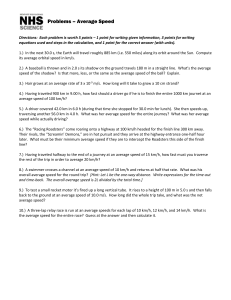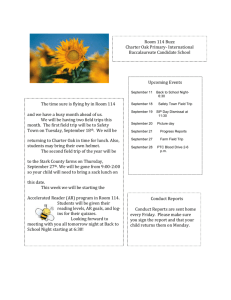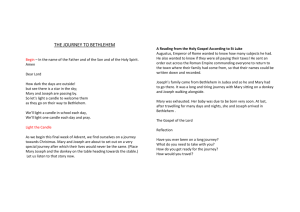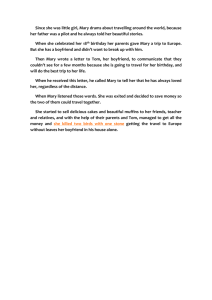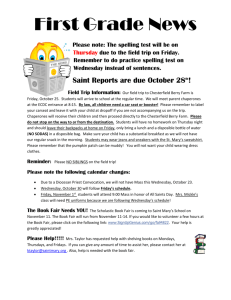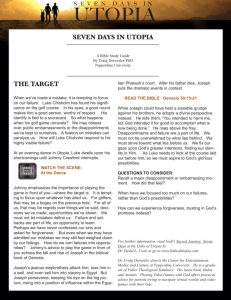NCEA Math Lesson Plan Grade: 8 Subject: Mathematics Domain
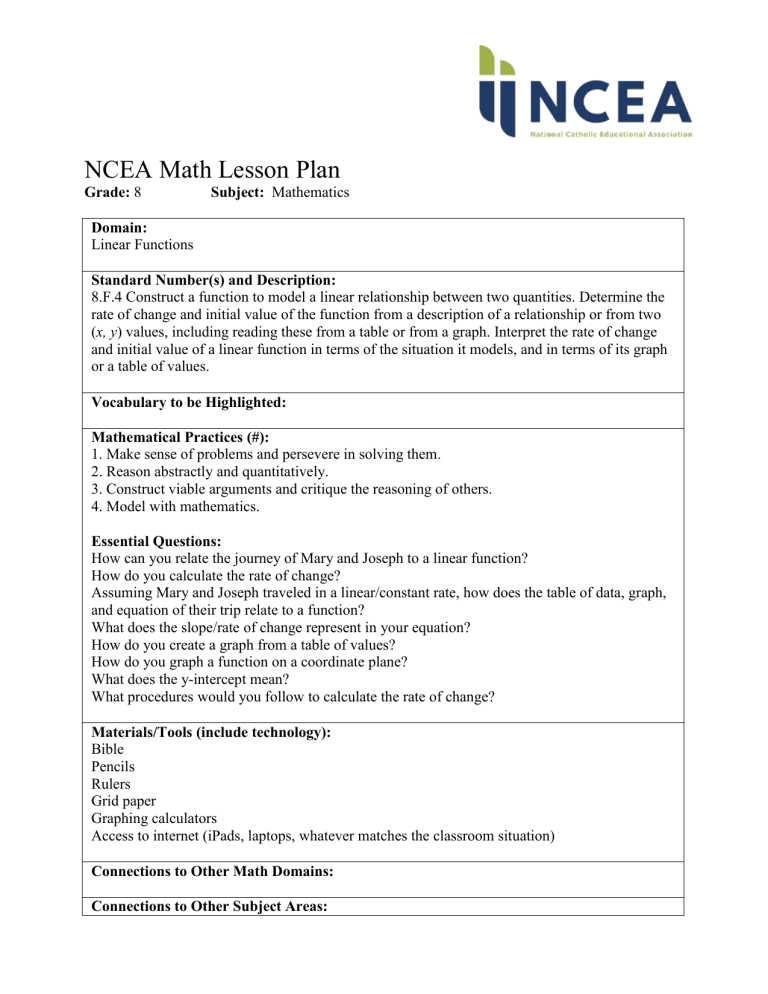
NCEA Math Lesson Plan
Grade: 8 Subject: Mathematics
Domain:
Linear Functions
Standard Number(s) and Description:
8.F.4 Construct a function to model a linear relationship between two quantities. Determine the rate of change and initial value of the function from a description of a relationship or from two
( x, y ) values, including reading these from a table or from a graph. Interpret the rate of change and initial value of a linear function in terms of the situation it models, and in terms of its graph or a table of values.
Vocabulary to be Highlighted:
Mathematical Practices (#):
1. Make sense of problems and persevere in solving them.
2. Reason abstractly and quantitatively.
3. Construct viable arguments and critique the reasoning of others.
4. Model with mathematics.
Essential Questions:
How can you relate the journey of Mary and Joseph to a linear function?
How do you calculate the rate of change?
Assuming Mary and Joseph traveled in a linear/constant rate, how does the table of data, graph, and equation of their trip relate to a function?
What does the slope/rate of change represent in your equation?
How do you create a graph from a table of values?
How do you graph a function on a coordinate plane?
What does the y-intercept mean?
What procedures would you follow to calculate the rate of change?
Materials/Tools (include technology):
Bible
Pencils
Rulers
Grid paper
Graphing calculators
Access to internet (iPads, laptops, whatever matches the classroom situation)
Connections to Other Math Domains:
Connections to Other Subject Areas:
Religion
Catholic Identity Component:
Students will look up Luke 2:1, discuss reason for the census, and represent the journey of the
Holy Family in a linear graphical representation.
Resources (attachments):
Activities/Timeline:
1. Students will read Luke 2:1 and the whole class will discuss the purpose of the census.
2. Students will research the trip distance from Jerusalem to Bethlehem. Next, students will complete a function table, graph, and equation for the trip.
3. Finally, students will present their findings as part of a class discussion.
Formative Assessment (what to look for, how/when to look):
The student will produce and present a function table, graph, representative equation, and narrative for their solution. Students will compare and contrast their findings in a whole class discussion.
Summative Assessment:




